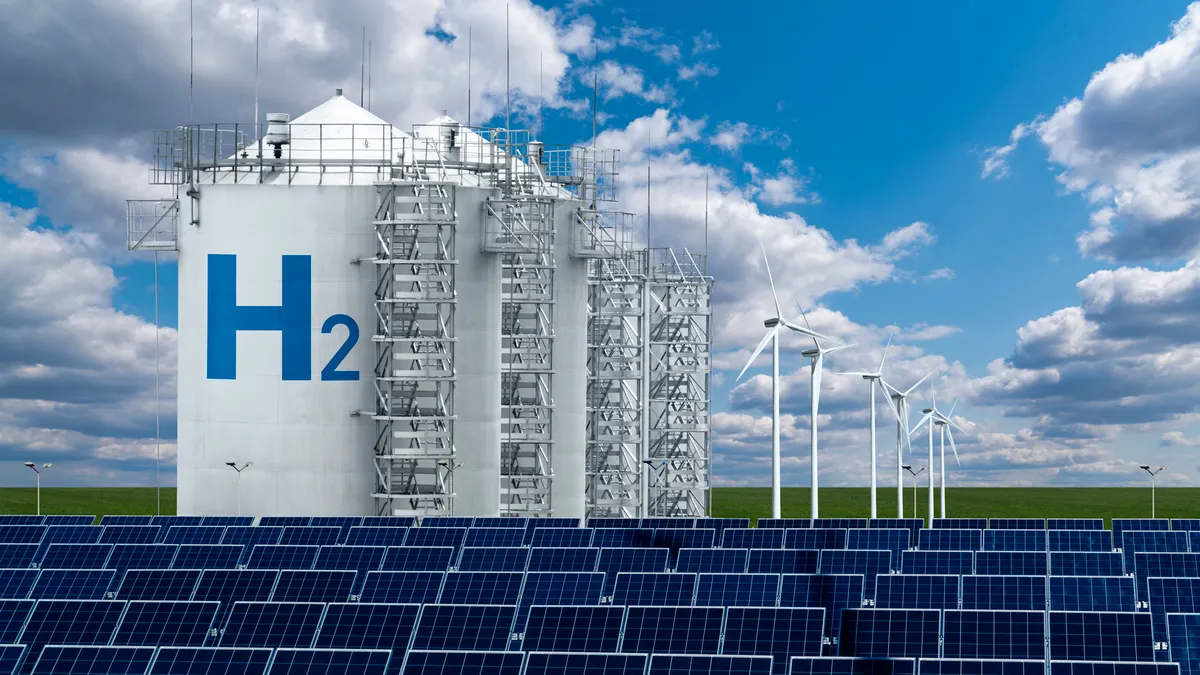Abbe Ramanan is a project director at Clean Energy Group.
Environmental Protection Agency Administrator Michael Regan stated this month that the new draft carbon rules the agency will be rolling out in April for gas- and coal-fired power plants will include provisions for these plants to eventually transition to burning hydrogen. Regan’s remarks indicate that the plants will not be required to initially meet emissions standards for burning hydrogen, but that project developers will need to include designs for the extensive future retrofitting that would be required for the plants to burn hydrogen safely.
Although the draft rules have yet to be released, Regan’s remarks suggest that the EPA is ignoring some key facts about the reality of burning hydrogen. As Clean Energy Group has written about extensively, hydrogen produces high amounts of the air pollutant nitrogen oxide (NOx) when burned. Even in new turbines built to run on 100% hydrogen and equipped with NOx emissions control technology, emissions are the same as new natural gas plants.
As we have seen in countless environmental justice communities, NOx emissions, even within regulated limits, have led to high rates of serious respiratory and cardiovascular illness. Building new gas plants – even ones that run on hydrogen – will subject these communities to disproportionate health impacts for decades longer.
Burning hydrogen is also not a silver bullet for meeting decarbonization goals. Blending hydrogen with natural gas does not significantly reduce carbon dioxide (CO2) emissions. Because of the lower energy density of hydrogen, a blend of 30% hydrogen and 70% natural gas would only result in a 13% decrease in CO2, as demonstrated in a blending pilot conducted by the New York Power Authority last year.
Beyond the limited CO2 emissions reductions burning hydrogen blends could provide, the EPA’s position ignores the serious global warming potential of hydrogen itself. Because of the molecule’s small size, hydrogen is extremely prone to leakage. And once in the atmosphere, it reacts with molecules that are primarily used for breaking down methane. The result is that even a small amount of hydrogen leakage will lead to a rise in methane accumulation in the atmosphere, which has severe impacts on near-term warming.
Exactly how much hydrogen leakage occurs is difficult to determine, because monitoring equipment that is sensitive enough to capture hydrogen leaks does not exist. A recent analysis by Columbia University has estimated current leakage rates at around 2.9%. However, the push to produce more hydrogen – and deploy it in more leak-prone use cases, like pipelines – could push economy-wide leakage rates to 29.6 million tons or 5.6% of all hydrogen produced by 2050.
This is especially worrying because a recent study by Princeton University and the National Oceanic and Atmospheric Administration using similar estimates of a future large-scale hydrogen economy found that if more than 9% of hydrogen produced leaks into the atmosphere, atmospheric methane would increase over the next few decades. Because of methane’s powerful short-term warming impacts, hydrogen’s indirect global warming effects over a 10-year period could be as much as 100 times that of CO2. And this is of course assuming the hydrogen produced is “green” hydrogen, made from renewable energy and water. “Blue” hydrogen, which relies on methane as part of the production process, has an even lower threshold for leakage, only 4.5% of total hydrogen produced under a large-scale hydrogen economy.
Ignoring these realities could have severe consequences for climate change and public health. As the EPA considers finalizing these new carbon rules, the agency must listen to environmental justice advocates and climate scientists calling for a cautious approach to hydrogen, and not to the industry groups that have been pushing to recklessly adopt these false solutions. Individuals and organizations interested in submitting comments regarding these proposed rules can do so online at regulations.gov once the rules are published in April.
Correction: This op-ed has been updated to correct information regarding the potential amount of hydrogen leakage, which could go as high as 29.6 million tons or 5.6% of all hydrogen produced by 2050, according to one analysis.













